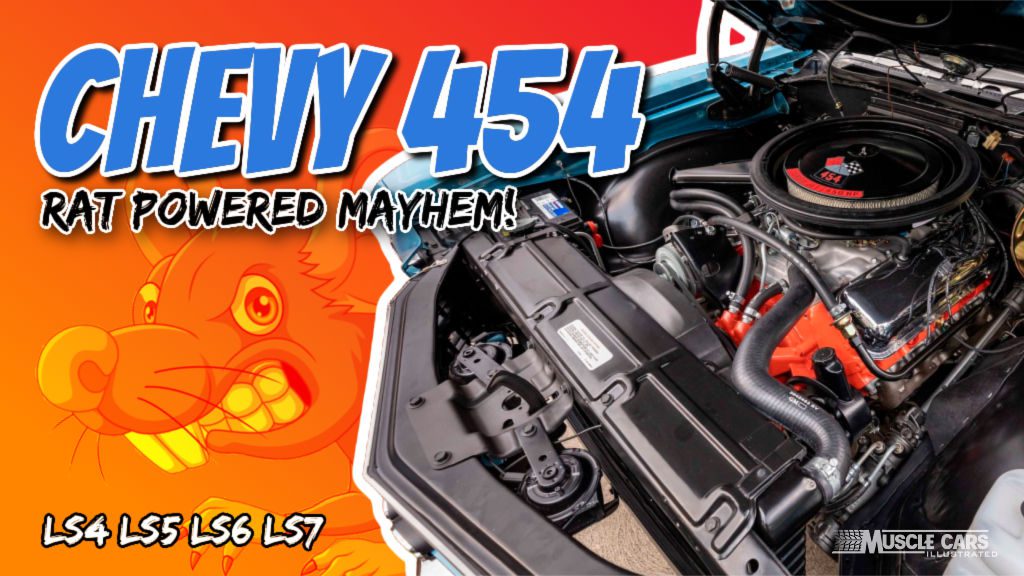
If you’re a fan of big block muscle cars, you probably already know that the Chevy 454 engine reigns supreme in factory horsepower, especially among Chevy enthusiasts. This engine has earned a reputation as the king of rat motors, and it’s not hard to see why.
Originally introduced in 1970, the 454 quickly became a staple in many iconic American muscle cars of the era, such as the Chevelle SS, Corvette, and Monte Carlo SS.
With its large displacement and powerful output, the 454 became synonymous with raw horsepower and high performance.
Let’s dive into the history, specifications, performance, and impact of the Chevy 454 engine and the classic cars it powered.
Table of Contents
A Brief History of the Chevy 454 Engine
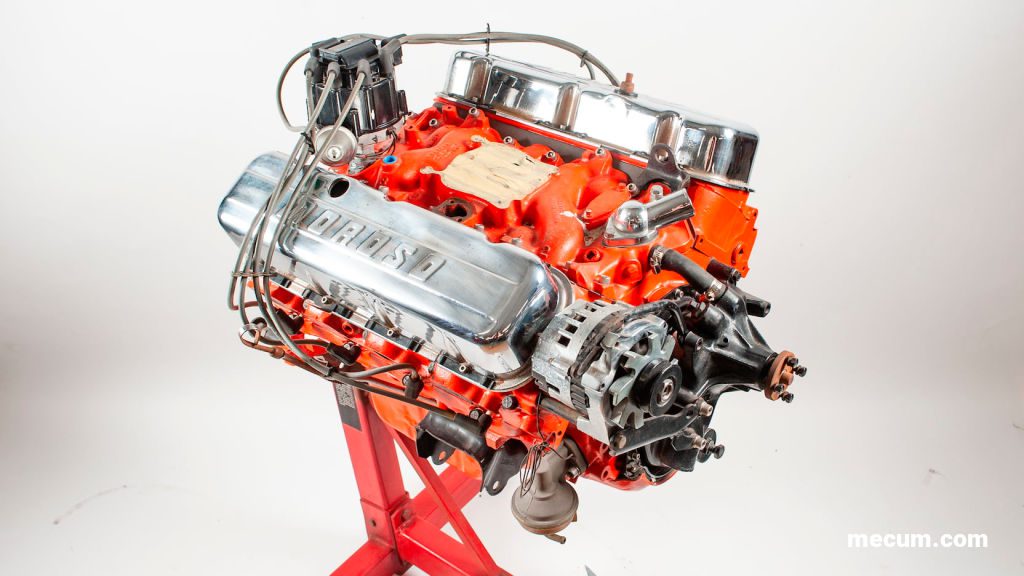
The Chevy 454 engine, also known as the Mark IV, was Chevrolet’s second big block production motor, following the Mark I W-series engine from the late 1950s to the mid-1960s.
As its name suggests, the Chevy 454 big block V8 has a 454 cubic inch displacement, with cast iron blocks and heads that offer great strength but result in an engine that weighs nearly 700 pounds.
The 454 was available in various versions from 1970 to 1976, including the LS5 and LS6. However, during the early 1960s, General Motors banned its auto racing involvement due to safety concerns and negative publicity.
As a result, GM implemented a cubic inch limit for intermediates that remained in place until 1970, which prevented the development of larger, high-performance engines.
This ban was lifted largely thanks to the success of the Pontiac GTO, which helped demonstrate the marketability of high-performance cars.
Small Block “Mouse” vs. Big Block “Rat”
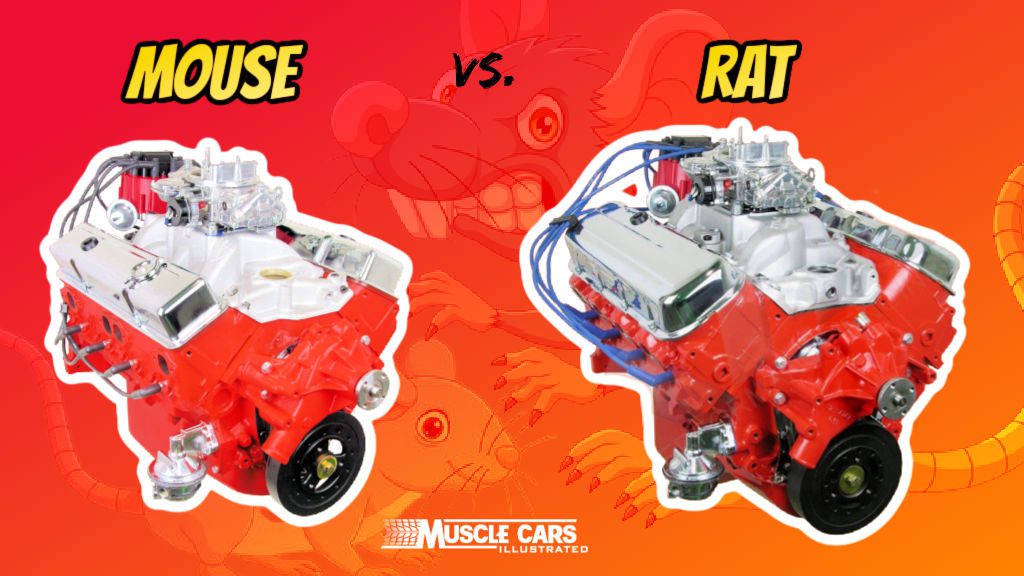
The main difference between a big-block Chevy and a small-block Chevy is their physical size and weight, with the big block being larger and heavier than the small block. The big block engines typically have a larger bore and longer stroke, resulting in greater displacement and more torque.
For example, the small-block Chevy includes engines like the 283, 305, 327, and 350, while the big-block Chevy includes engines like the 396, 427, and 454.” The small block engines are generally more fuel-efficient and easier to work on, making them a popular choice for street cars and daily drivers. In contrast, the big block engines are better suited for high-performance applications.
Chevy’s introduction of the 265 small block in 1955 was a hit among stock car drivers due to its small size, light weight, and powerful performance. Drivers affectionately called it the “Mighty Mouse” after the popular cartoon character, which later became simply “Mouse.” As a nod to the “Mouse” motor’s larger, heavier, and more powerful counterpart, drivers dubbed it the “Rat” motor. Today, the terms “Mouse” and “Rat” motors are used to distinguish between small and big block Chevy engines.
| Feature | Small Block Chevy | Big Block Chevy |
|---|---|---|
| Nickname | Mouse | Rat |
| Displacement Range | 283-400 cubic inches | 396-454 cubic inches |
| Cylinder Head Design | 2 valves per cylinder | 2 valves per cylinder |
| Block Material | Cast iron | Cast iron |
| Weight | Lighter than Big Blocks | Heavier than Small Blocks |
| Power Output | Up to 375 horsepower | Up to 450 horsepower |
| Torque | Good low-end torque | Tremendous low-end torque |
| RPM Range | Higher RPM range | Lower RPM range |
| Applications | Popular for street/strip cars | Popular for drag racing and high-performance cars |

Get The Top 50 Fastest Muscle Cars chart. Includes year, model, engine, 1/4 mile times, and more—absolutely free!
Which Chevy Muscle Cars Had the 454 Big Block V8?
The 454 engine was available in several muscle cars during the 1970s. Some examples of muscle cars that came with a 454 engine include:
| Year | Vehicle |
|---|---|
| 1970-1974 | Chevy Corvette |
| 1970-1975 | Chevy Chevelle |
| 1970-1975 | Chevy El Camino |
| 1970-1975 | Chevy Monte Carlo |
| 1970-1976 | Chevy Caprice |
Top 5 Muscle Cars with a Chevy 454 Engine
Here are five prime muscle car specimens that came from the factory with a 454 V8:
1970 Chevelle SS 454 LS6
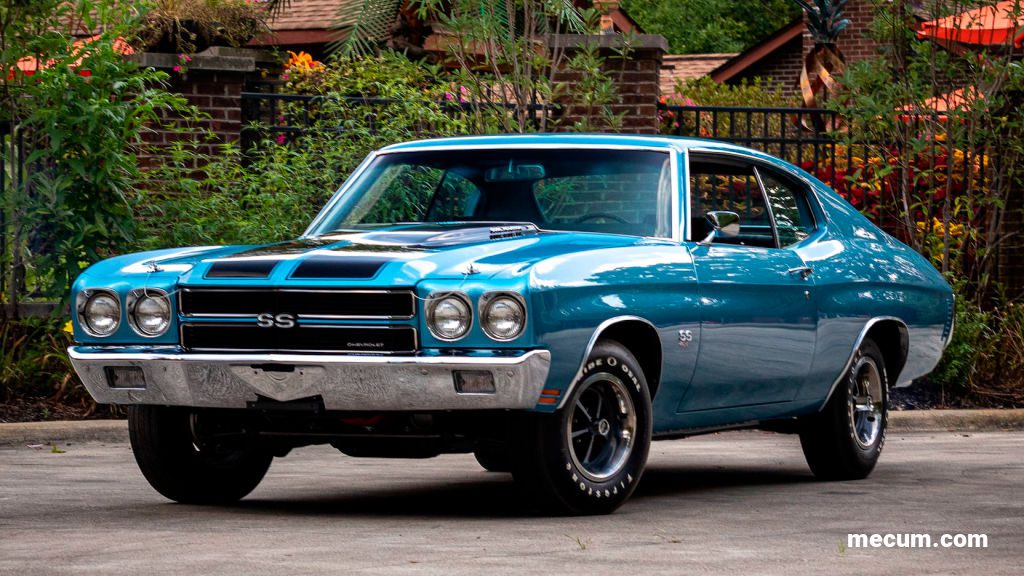
The 1970 Chevy Chevelle SS 454 LS6 was a true muscle car icon, featuring the mighty 454 cubic inch V8 engine rated at an impressive 450 horsepower. Despite having the most horsepower of any muscle car, it was the second-fastest muscle car in 1970. With a quarter-mile performance of 13.12 seconds at a speed of 107.1 miles per hour, this Chevelle SS was fast and a force to be reckoned with during its time. The aggressive styling and powerful engine made the 1970 Chevelle SS 454 LS6 one of the era’s most sought-after and iconic muscle cars of the era.
| Model Year | 1970 |
|---|---|
| Displacement | 454 cubic inch V8 |
| Horsepower | 450 hp |
| Torque | 500 lb-ft |
| Compression Ratio | 11.25:1 |
| Bore and Stroke | 4.25″ x 4.00″ |
| Carburetor | Holley four-barrel |
1971 Corvette 454 LS6
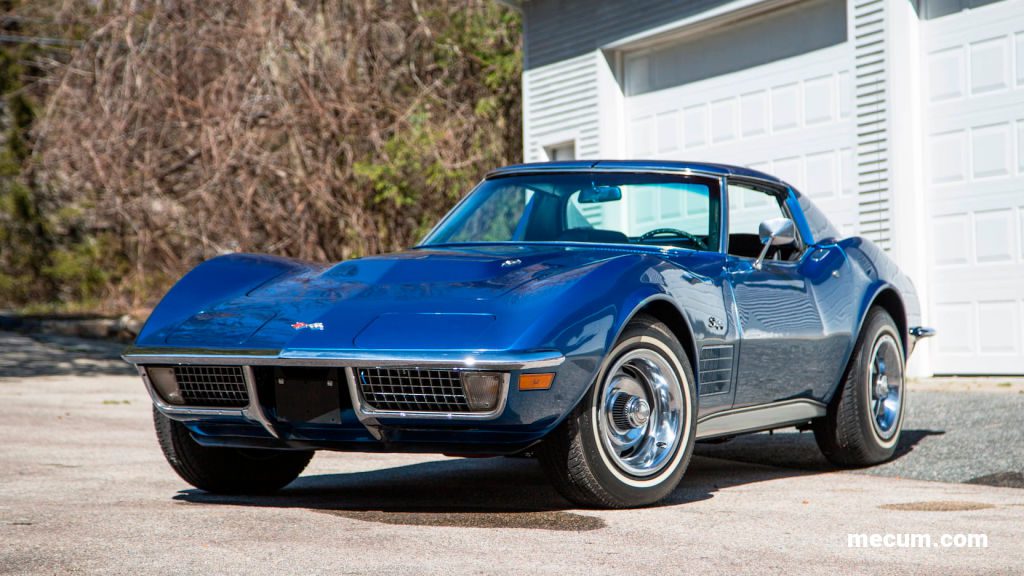
While the Corvette isn’t technically a muscle car, the 1971 Corvette 454 LS6 was a powerful American Sports car that packed a punch. It featured a 454 cubic inch V8 engine with an impressive 425 horsepower and 475 lb-ft of torque. The LS6 was equipped with a high-performance camshaft, solid lifters, and a Holley 800 CFM carburetor, accelerating from 0-60 mph in just 5.4 seconds. The quarter-mile time for the LS6 is reportedly in the low-13-second range, making it a formidable contender on the street and drag strip.
| Specifications | Values |
|---|---|
| Displacement | 454 cubic inches V8 |
| Horsepower | 425 @ 5600 RPM |
| Torque | 475 lb-ft @ 4000 RPM |
| Compression Ratio | 9.0:1 |
| Bore and Stroke | 4.25″ x 4.00″ |
| Carburetor | Holley 800 CFM |
1970 El Camaino SS 454 LS6
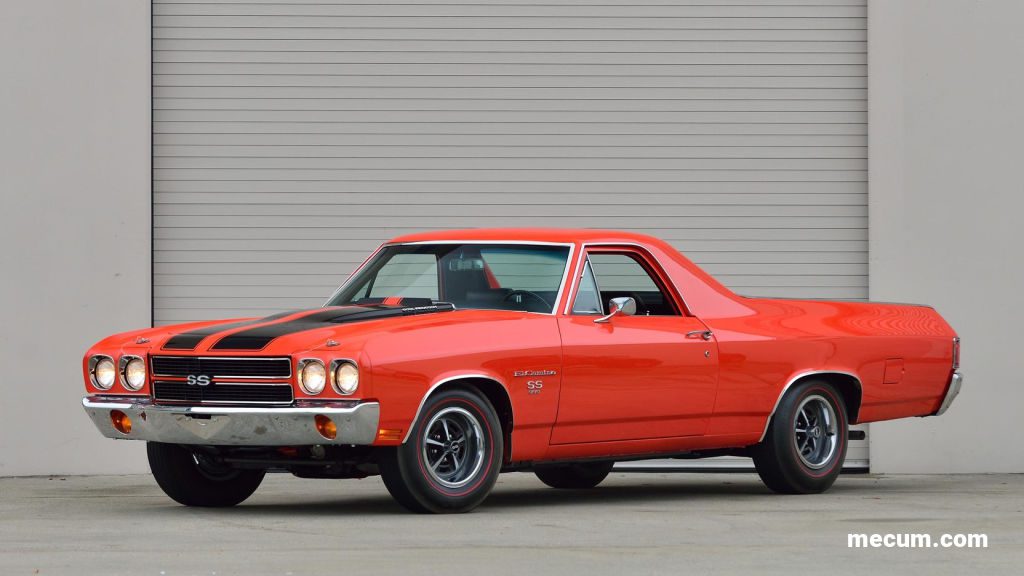
The 1970 Chevy El Camino SS 454 LS6 was a remarkable blend of muscle car performance and pickup truck utility, boasting a 454 cubic inch V8 engine that produced a substantial 450 horsepower. The El Camino SS managed a quarter-mile performance of approximately 13.7 seconds at a speed of 103 mph, making it a seriously quick vehicle for its era. While not as fast as the Corvette or Chevelle, the El Camino SS was still a powerful and capable vehicle that offered a unique blend of style and utility.
| Specification | Details |
|---|---|
| Displacement | 454 cubic inches V8 |
| Horsepower | 450 hp @ 5,600 rpm |
| Torque | 500 lb-ft @ 3,600 rpm |
| Compression Ratio | 10.25:1 |
| Bore and Stroke | 4.25 x 4.00 inches |
| Carburetor | Holley 800 CFM |
1970 Chevy Monte Carlo SS 454 LS5
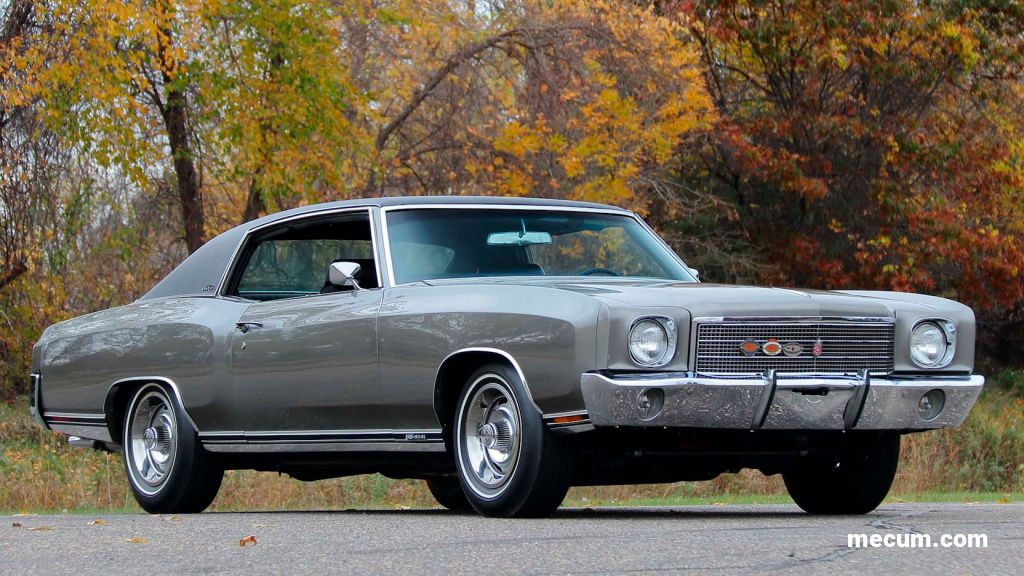
The 1970 Chevy Monte Carlo SS was a luxury-oriented muscle car that was also available with the 454 cubic inch V8 engine. The engine was rated at 360 horsepower, and the quarter-mile performance of the Monte Carlo with this engine was around 14.6 seconds at a speed of 97 mph. The Monte Carlo SS offered a more refined driving experience than many other era muscle cars, focusing on comfort and luxury.
| Specification | Details |
|---|---|
| Displacement | 454 cubic inches V8 |
| Horsepower | 360 hp @ 4,800 rpm |
| Torque | 500 lb-ft @ 3,200 rpm |
| Compression Ratio | 10.25:1 |
| Bore and Stroke | 4.25 in x 4.00 in (108 mm x 102 mm) |
| Carburetor | Rochester Quadrajet four-barrel |
1970 Chevy Caprice 454 LS5
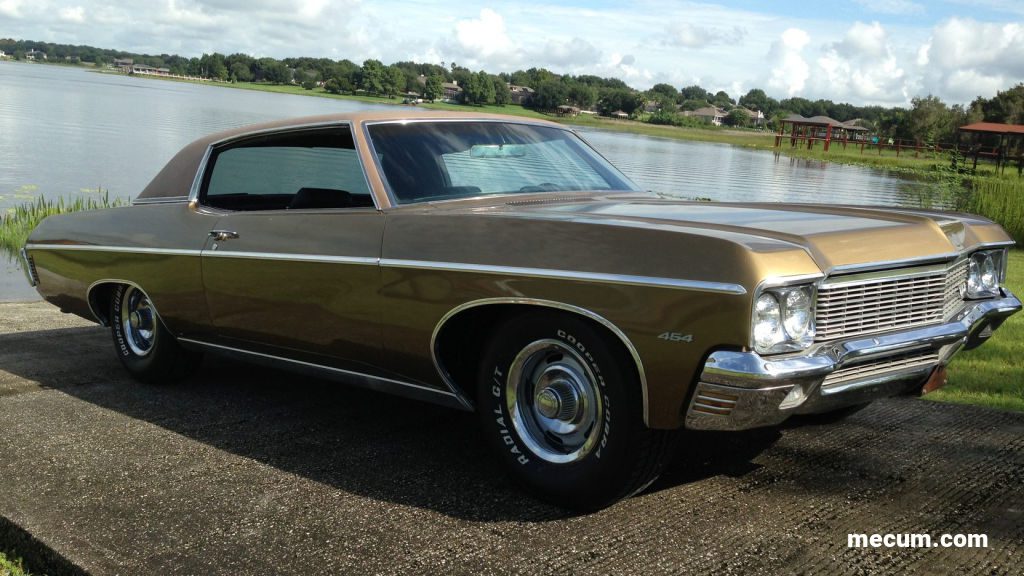
The 1970 Chevy Caprice was a full-size car with a 454 cubic inch V8 engine, rated at 390 horsepower. The quarter-mile performance of the Caprice with this engine was around 14.9 seconds at a speed of 96 mph. While not as fast as some of the other muscle cars of the era, the Caprice offered a comfortable and spacious interior, making it a popular choice for families and those who valued comfort over performance.
| Specification | Details |
|---|---|
| Displacement | 454 cubic inches V8 |
| Horsepower | 345 hp @ 4800 rpm |
| Torque | 500 lb-ft @ 3200 rpm |
| Compression Ratio | 10.25:1 |
| Bore and Stroke | 4.25 x 4.00 inches |
| Carburetor | Quadrajet four-barrel |
The muscle car era was characterized by fierce competition among American automakers, each trying to outdo the other with bigger, more powerful engines. The 454 was one of the most popular and respected of these engines, with a reputation for delivering strong performance and reliability.
The Rise of Chevy’s 454 LS Engine
The Chevrolet 454 engine, also known as the big block engine, was one of the most popular high-performance engines of the muscle car era. Introduced in 1970, the 454 engine was available in several different variations, including the LS4, LS5, LS6, and LS7.
These engines were installed in various General Motors vehicles, including the Chevelle, Corvette, and Monte Carlo. While the LS5 and LS6 engines are the most well-known and sought-after today, the LS7 engine has become one of the most powerful and sought-after crate engines ever. Let’s examine the history, specifications, and features of these iconic Chevy 454 engines.
LS4 454 Engine
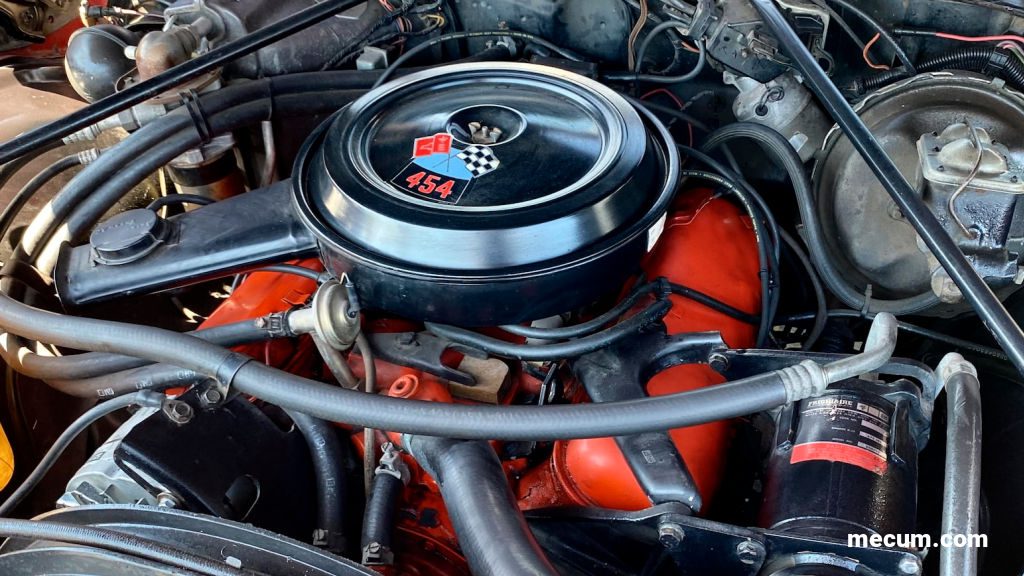
The LS4 engine was a variation of the Chevrolet 454 engine that was introduced in 1973. It was designed to be a lower-performance, more affordable option than the LS5 and LS6 engines. The LS4 engine was installed in various muscle cars, including the Chevelle, Monte Carlo, and El Camino. The engine displaced 454 cubic inches, producing 245 horsepower and 345 lb-ft of torque. It had an 8.5:1 compression ratio and was equipped with a Rochester Quadrajet four-barrel carburetor. Despite being less powerful than the LS5 and LS6 engines, the LS4 still had plenty of muscle and was a popular option for car enthusiasts looking for an affordable big-block engine.
| Year | Displacement | Compression Ratio | Horsepower | Torque |
|---|---|---|---|---|
| 1973 | 454 cubic inches | 8.5:1 | 275 | 395 lb-ft |
| 1974 | 454 cubic inches | 7.7:1 | 235 | 385 lb-ft |
| 1975 | 454 cubic inches | 8.0:1 | 215 | 330 lb-ft |
| 1976 | 454 cubic inches | 8.0:1 | 205 | 330 lb-ft |
LS5 454 Engine
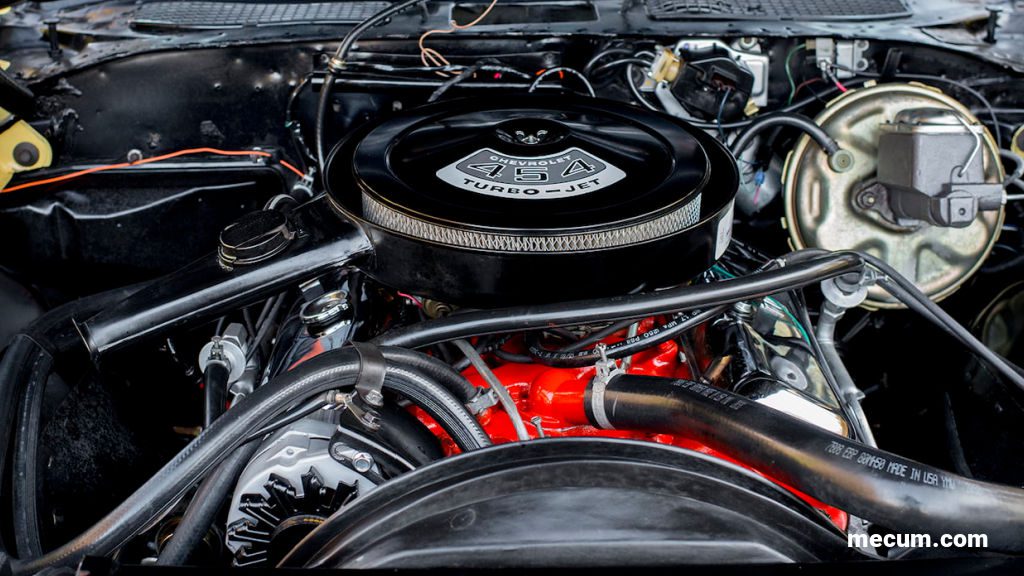
The LS5 engine used in the Chevrolet Chevelle and Corvette from 1970-1972 showed some differences in specs across the three years. Regarding horsepower, the LS5 engine in the 1970 Chevelle produced the most with 360 hp, followed by the 1971 Corvette with 330 hp, and then the 1972 Chevelle with 270 hp. The torque numbers also varied, with the 1970 Chevelle having the highest torque at 500 lb-ft, followed by the 1971 Corvette at 380 lb-ft, and then the 1972 Chevelle at 390 lb-ft. The compression ratios stayed consistent at 10.25:1 across all three years. The carburetor size also remained the same at 750 CFM. However, the LS5 engine in the 1971 Corvette featured hydraulic lifters, while the 1970 and 1972 Chevelles had solid lifters. Overall, while there were some variations in power output and features across the three years, the LS5 engine remained a reliable and powerful option for these classic Chevrolet models.
| Year | Displacement | Compression Ratio | Horsepower | Torque |
|---|---|---|---|---|
| 1970 | 454 cubic inches | 10.25:1 | 360 | 500 lb-ft |
| 1971 | 454 cubic inches | 8.5:1 | 365 | 465 lb-ft |
| 1972 | 454 cubic inches | 8.5:1 | 270 | 390 lb-ft |
LS6 454 Engine
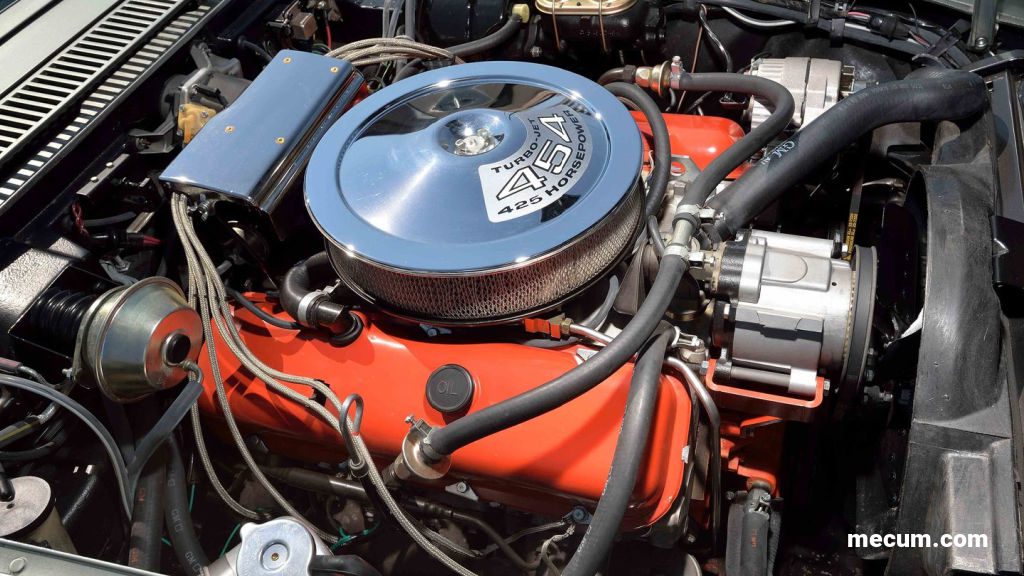
The LS6 was a 454 cubic inch engine produced by Chevrolet in 1970. It was the most powerful engine offered in the Chevelle SS that year, or any American muscle car for that matter, producing 450 horsepower. In 1971, Chevy offered the same LS6 engine in the Corvette but with slightly lower horsepower ratings due to a different exhaust system.
Both versions of the LS6 feature the same 454 cubic inch V8 engine, but their specifications have some key differences. The Chevelle LS6 produces more horsepower and torque than the Corvette LS6, with 450 horsepower and 500 lb-ft of torque, compared to the Corvette’s 425 horsepower and 475 lb-ft of torque. However, the Corvette LS6 has a lower compression ratio of 9.0:1 compared to the Chevelle’s 10.25:1.
| Specification | 1970 Chevelle SS LS6 | 1971 Corvette LS6 |
|---|---|---|
| Engine Code | LS6 | LS6 |
| Displacement | 454 cubic inches (7.4L) | 454 cubic inches (7.4L) |
| Compression Ratio | 11.25:1 | 9.0:1 |
| Horsepower | 450 hp @ 5,600 rpm | 425 hp @ 5,600 rpm |
| Torque | 500 lb-ft @ 3,600 rpm | 475 lb-ft @ 4,000 rpm |
| Bore x Stroke | 4.25″ x 4.00″ | 4.25″ x 4.00″ |
| Camshaft Type | Hydraulic | Hydraulic |
| Valve Train | OHV | OHV |
| Fuel System | Holley 4-barrel carburetor | Rochester Quadrajet carburetor |
| Intake Manifold | Aluminum high-rise | Aluminum high-rise |
| Exhaust Manifold | Cast iron | Cast iron |
| Ignition System | Points-type | Electronic |
| Redline | 6,500 rpm | 6,500 rpm |
How the LS6 Stacked Up to the Competition
| Engine Model | Horsepower | Torque (lb-ft) | Displacement (cu in) | Bore x Stroke (in) | Compression Ratio |
|---|---|---|---|---|---|
| LS6 (Chevrolet) | 450 @ 5600 RPM | 500 @ 3600 RPM | 454 | 4.251 x 4.00 | 11.25:1 |
| Oldsmobile 455 W-30 | 370 @ 5400 RPM | 500 @ 3600 RPM | 455 | 4.125 x 4.25 | 10.5:1 |
| Buick 455 Stage 1 | 360 @ 4600 RPM | 510 @ 2800 RPM | 455 | 4.3125 x 3.90 | 10.25:1 |
| 426 Hemi (Chrysler) | 425 @ 5000 RPM | 490 @ 4000 RPM | 426 | 4.25 x 3.75 | 10.25:1 |
| 440 Six Pack (Chrysler) | 390 @ 4700 RPM | 490 @ 3200 RPM | 440 | 4.32 x 3.75 | 10.5:1 |
| Pontiac 455 | 360 @ 4600 RPM | 500 @ 3100 RPM | 455 | 4.152 x 4.21 | 10.25:1 |
| 428 Cobra Jet (Ford) | 335 @ 5200 RPM | 440 @ 3400 RPM | 428 | 4.135 x 3.98 | 10.6:1 |
| Boss 429 (Ford) | 375 @ 5200 RPM | 450 @ 3400 RPM | 429 | 4.36 x 3.59 | 11.3:1 |
LS7 454 Engine

The LS7 454-inch big block engine was supposed to be the successor of the LS6 produced by General Motors. However, due to high gas prices, insurance concerns, and upcoming new smog and unleaded fuel mandates, General Motors never installed the LS7 in any of its cars. The LS7 was only offered as an “off road use only” crate engine to enthusiasts and pre-1972 muscle car owners. Despite this, the LS7 engine is known for its impressive specifications and features, including cast iron open chamber rectangular port cylinder heads, forged steel 4.0-inch stroke crankshaft, and 12.25 compression pistons.
Impact of the Chevy 454 Motor
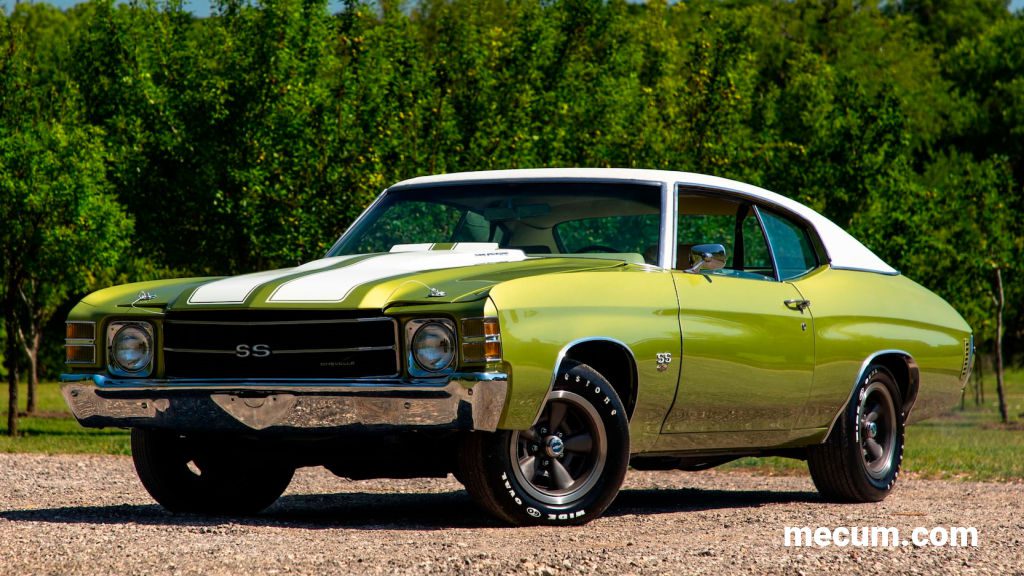
The Chevy 454 engine significantly impacted the muscle car era, as it was one of the largest and most powerful engines available during the time. Its origins date back to the 1960s when Chevy decided to produce a big block engine to compete with Ford and Chrysler. After several years of research and development, the first 454 engine was released in 1970.
The Chevy 454 engine dominated the muscle car scene during the early 1970s, providing a combination of high horsepower and torque that was unmatched by many of its competitors. Its massive size and impressive performance made it a popular choice for drag and street racing. The 454’s popularity also influenced other automakers to produce their high-performance engines, further fueling the muscle car wars.
However, the big block engine era was short-lived, as tightening emissions regulations and the 1973 oil crisis led to declining demand for high-performance cars. This, in turn, forced automakers to focus on smaller, more fuel-efficient engines, which ultimately led to the demise of the 454 and other big block engines. Despite this, the Chevy 454 remains a symbol of American automotive performance and is still sought after by car enthusiasts and collectors today.
Conclusion
The Chevy 454 engine was a powerhouse of the muscle car era, offering impressive performance and power to various Chevrolet vehicles. With its roots in the GM racing ban of the early 1960s, the 454 represented a new era of big block engines and helped to define the golden age of American muscle cars. From its first appearance in the 1970 Chevy Chevelle to its use in the Corvette, El Camino, Monte Carlo, and Caprice, the 454 has become a legend in the automotive industry. While the muscle car era may be over, the legacy of the Chevy 454 engine lives on.

Ryan Wheaton
Ryan has owned muscle cars since 1986 and currently owns a 1972 Dodge Charger Rallye. He combines passion and experience to create engaging content for fellow muscle car enthusiasts. In 2018, he founded Muscle Cars Illustrated, authoring hundreds of articles on tips, history, and trends in the muscle car industry. He attends national car shows, auctions, and museums to stay current with the latest developments in the muscle car industry.
